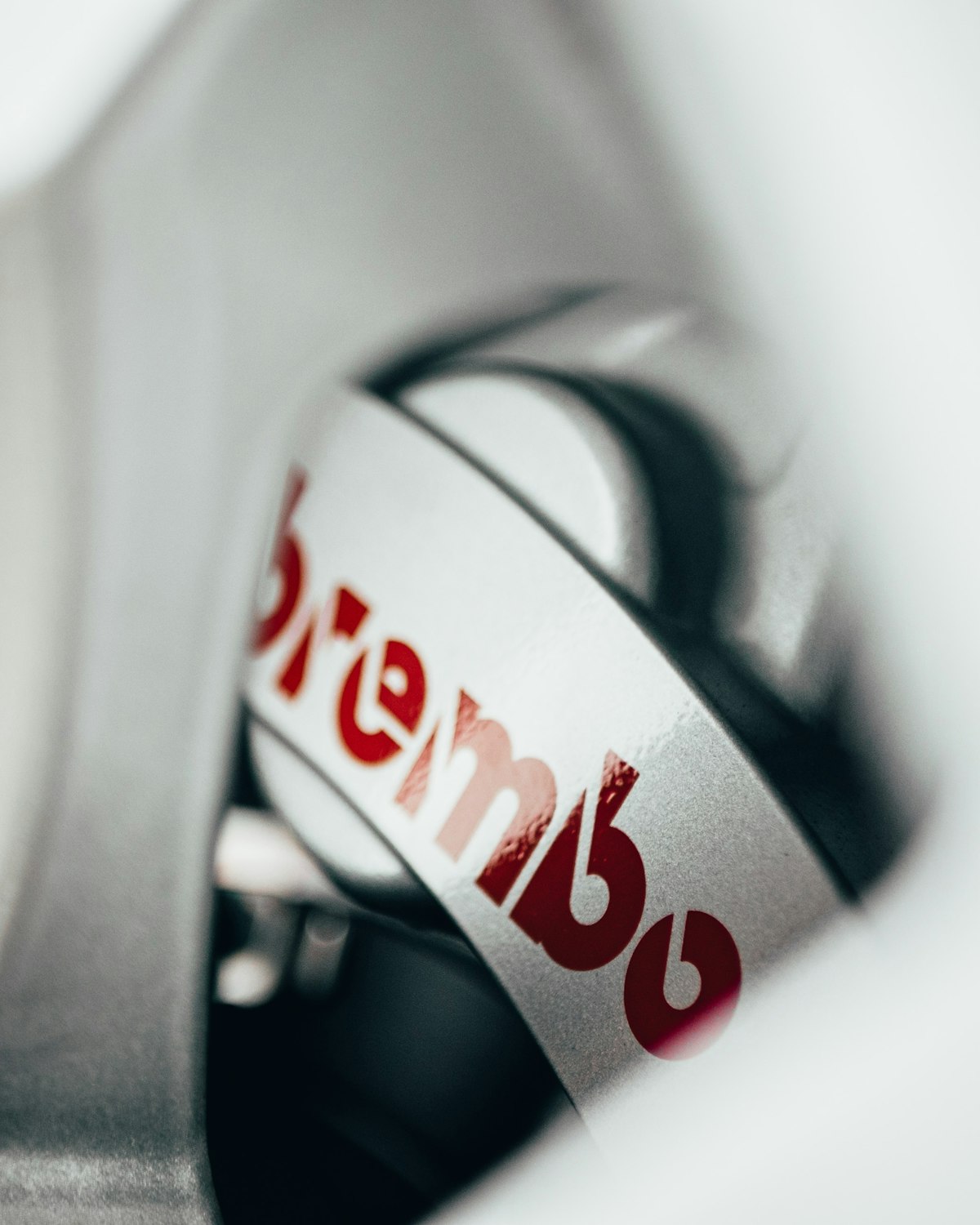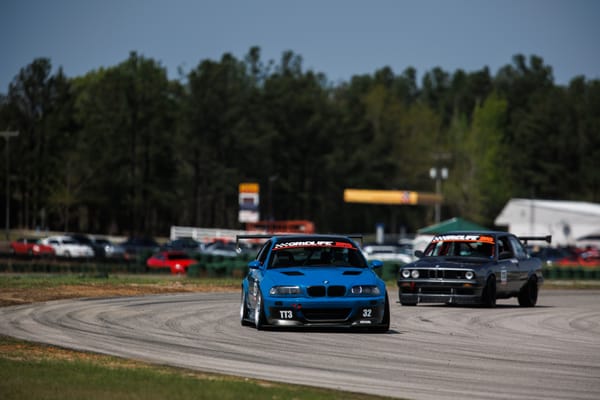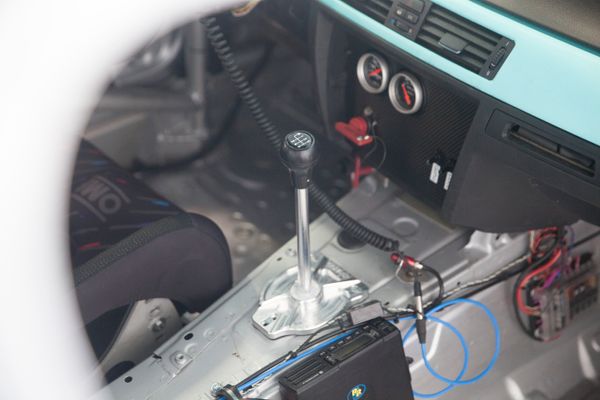Authors Note: Thank you Nick F. for the topic suggestion.
When building a track or race car, there are a lot potential upgrades that are going to be vying for your time, attention, and perhaps more importantly your money. In the absence of an unlimited budget, you're going to have to prioritize some upgrades over others.
What should you splurge on and what should you skimp on (or skip entirely)? Let's take a lot at some common upgrades.
Maintenance: Splurge
Nothing sucks more than being sidelined because of a preventable failure at the track, especially if you end up having to be towed home. I'm not going to delve into this one too much: it should be expected that the car is up to date on maintenance using quality parts that you can trust.
Brakes: Skimp
Alright, so this one might seem shocking at first, but I am looking at it from the perspective of a lot of newcomers that think aftermarket big brake kits (BBKs) are required for track use.
BBKs aren't the upgrade that a lot of people think they are. Better consumable rates (larger, thicker pads and rotors), lighter weight (rotational mass and unsprung weight), and better heat dispersion are key factors.
Sure, in some cases a BBK is going to help improve the braking performance of a skilled driver that is extracting a lot from the car. But for beginner to intermediate drivers that are unlikely to actually benefit from the pros of a BBK, an upgraded "stock" braking system is going to be more than sufficient on most vehicles.
Of course even with a stock system, some upgrades are basically mandatory. You need good brake fluid to avoid boiling, track-focused pads to avoid pad fade, and to address weak points in the stock system (such as braided lines and brass guide bushings).

Dampers: Splurge
This one can be hard to convince people of until they experience higher end dampers firsthand. You'll often see a budget of $1,200-1,500 for a track car suspension setup, which limits them to basic spring/shock combos (such as Bilstein Sport + H&R Race), or any of the myriad budget coilover setups (BC/Fortune Auto/Feal/Megan/ISC/etc.).
Those setups are more than okay for street or occasional track use, but they will fall short when it comes to the demands of serious track and competition use.
Quality dampers are expensive, but the cost is well justified. The performance, confidence, and consistency of a quality damper will pay dividends as your skills improve, and you won't be left feeling like you have to upgrade your setup after a year or two.
Springs: Skimp
Piggybacking off the dampers segment, lower end coilover companies love to pitch spring 'upgrades' as the key to better compliance and handling. Better springs are not going to make up for bad valving or low quality dampers. In fact, most drivers are never going to be able to discern the difference between a generic coilover spring and something 3x the price, like Swift or Hypercoil, given the same spring rates.
Expensive springs have some benefits (lighter weight, more bump travel, more consistent rates) and they certainly have their applications, but it would be crazy to spend $300 upgrading to Swift springs on a $1,200 coilover. Don't do it. Eibach ERS springs are great and about $120 a pair. Swifts are great too, but at 50% higher cost ($180 a pair), you'd be better off buying some spare sets of Eibach springs for setup changes and tuning.

Safety: Splurge Wisely
Nobody is ever going to tell you to skimp on safety gear, but some areas are worth spending more than others. Here are some areas to consider:
- Roll Cage Splurge wisely. A more expensive cage isn't necessary better or safer. Find a reputable fabricator that aligns with your goals for the cage, and be sure to involve yourself in the design process.
- Seat Skimp-ish. Most fixed back racing seats are rated to the same FIA specification. Buy a containment (halo) seat that fits you well. The last thing you want is to be uncomfortable in the one thing holding you into the car. $700-1,000 seems to be the sweet spot for seat pricing.
- Harnesses Skimp-ish. Again, belts are going to be rated using the same FIA spec. Buy 2" FIA harnesses (HANS-compatible) from a reputable maker such as Schroth, OMP, Lifeline, etc. and you'll be safe even if they don't have all the bells and whistles.
- Window Nets Skimp. These are usually SFI rated using the same specification and can vary in price wildly. Bimmerworld sells a great net that is only $43.
Again, if any safety item is going to make you feel safer or more comfortable in the car, nobody is going to knock you for splurging. If they do, it's probably because they don't value their life as much as you do yours.
Exhaust: Skimp
Nice exhaust systems are freaking expensive. They might net a few horsepower on your average NA car, hell they may even be a lot lighter than a stock system. I just believe that when it comes to bang-for-your-buck on an average, 150-300whp NA car, there are going to be better ways to spend your money. Keep it simple and inexpensive whenever possible.
Seat Time: Splurge
Do more events, damnit.
Shifter: Skimp
You can drop a stack on a chassis-mount shifter. As cool as they are, they aren't going to make you a faster or better driver. Given the choice of some of the other splurge items on this list, I would skimp on the shifter, opting to rebuild the stock unit until you truly believe it is holding you back.

Tires: Splurge
There are only 4 things keeping your car in contact with the racing surface, and they heat-cycle and wear out quickly. In DE you are best served by a decent tire that wears like iron, but once you reach a certain skill level or consistency, and especially if you are competing, fresh tires are a sure-fire way to help you stay on pace with your competitors.
If you've plateaued or struggle to match your old personal best times, ask yourself, how old are your tires? They might still have some tread life left, but if you have 30+ heat cycles on them, consider buying some stickers.
Weight Reduction: Skimp
Some of my friends have become weight weinies (you know who you are). There is a point of diminishing returns when it comes to weight reduction on a car. By all means, do all the free/cheap/easy methods of dropping weight. Eventually, though, you are going to spend literal hours to drop a matter of ounces, or be left with no other choices but to spend big money on things like composite body panels.
Sometimes that may be the only option to remain competitive, but given that competition classes are going to have minimum weights and often require ballast to some degree, your money may be better spent elsewhere. Plus, I will wager that you cannot feel a 20-30lb difference in your car's weight (~1% of total weight).
Coaching: Splurge
I believe that we can only progress so far without the help of others. Most of us only have a small degree of natural talent, if any at all. We can all benefit from coaching and mentorship, paid or otherwise.
Invest money in a driver coach, or invest time and effort into relationships where you can benefit from knowledge gained at the cost of whatever you can offer the other person (whether it be beer, friendship, turning a wrench, or whatever).
Radiators: Skimp
Let's be honest: most aluminum radiators are for bling more than they are an upgrade. While you don't have to worry about plastic parts splitting, you do have to worry about iffy welds and lower fin density.
Most OE replacement radiators area going to be half the cost (~$120) and have a higher fin density than a Mishimoto radiator (~$230). Realistically, service life is comparable between the two. Really good aluminum radiators (like PWR and C&R) are in the $1,000+ range. Save those for the most demanding applications and most serious race cars.
That about covers the topics that jumped out in my mind. Did I miss something, or do you disagree strongly? Email me and let's keep the discussion going!






